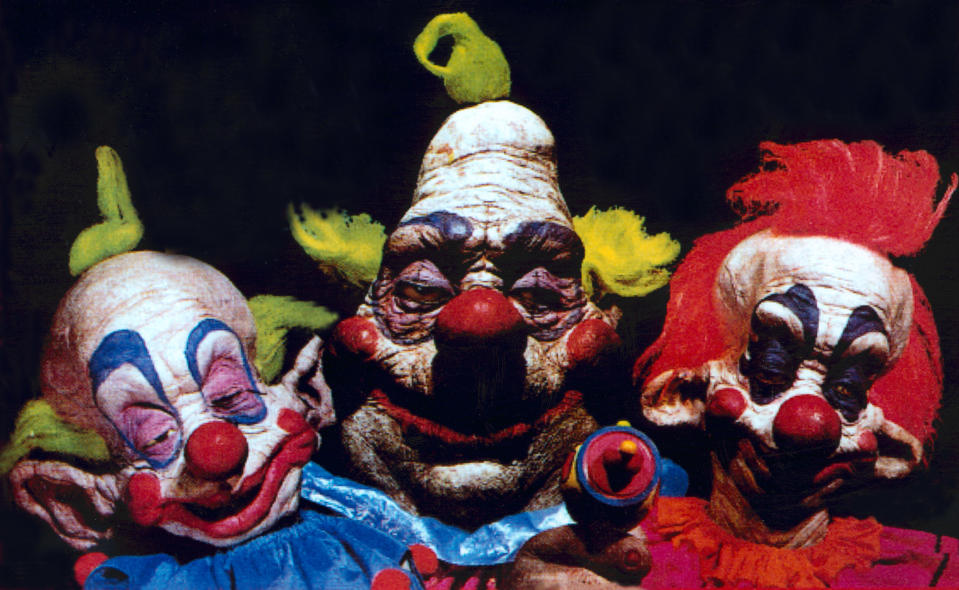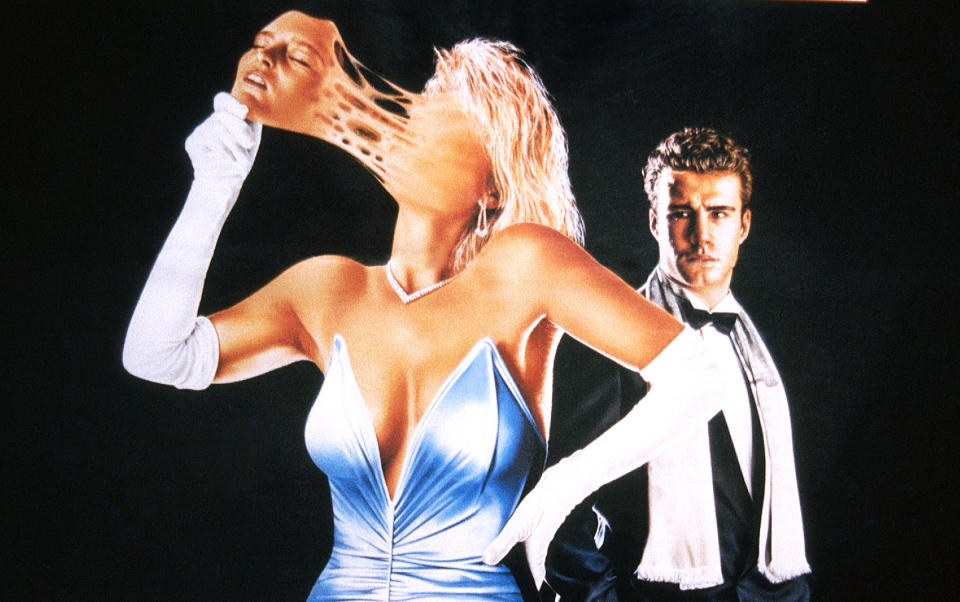The 185 Best Horror Movies of All Time

Why do horror movies still feel undervalued? One thing’s for certain: In this age of geekery and craft reigning supreme, critics and academics no longer dismiss the genre as disreputable with the kneejerk regularity some once did. But even now there’s talk of “elevated horror” (see that concept’s lambasting in “Scream 5″) appearing in artier explorations of dread and terror — Ari Aster’s “Midsommar,” Luca Guadagnino’s “Suspiria,” Rose Glass’ “Saint Maud” — that are clearly distinguished from, well, non-elevated horror. The idea being that they engage your brain more than just showing brains…eaten by zombies or splattered against the wall.
How can films that fire your adrenal glands, send shivers down your spine, raise goosebumps, and quicken your breath — that inspire such an intense physical reaction — also be cerebral experiences? We forget all the time that, as Anna Karina’s “Pierrot Le Fou” character Marianne Renoir says, “There can be ideas in feelings.”
More from IndieWire
'Texas Chainsaw Massacre' Review: Leatherface Slashes Gen Z Gentrifiers in Bloody Sequel
Horror Movies Dominated Sundance. Pay Attention to the Talent It's Unleashed (Column)
What scares people says a lot about them, as the debates about “Get Out,” “Men,” and similar titles have revealed. What scares people, and makes them laugh, says even more; see “Ready or Not” or “What We Do in the Shadows.” These two genres are the most often expected to provoke an immediate, visceral reaction from audiences. Maybe the aversion some viewers have to both is a fear of losing control: of laughing so hard you snort or having to turn away in fright, of embarrassing yourself. A lot of people simply don’t want to lose control, no matter what. What’s funny is that horror, like comedy, is a genre in which each filmmaker has to assert their utmost control over the material, has to perfectly calibrate the storytelling, so that their art’s audience can lose it. Extreme control so that the audience can lose control: That seems to be the key.
To celebrate these intensely primal, personal films, the IndieWire staff has put together this list of the 185 Greatest Horror Movies of All-Time. Our writers and editors suggested dozens of titles and then voted on a list of finalists to determine the ultimate ranking of the first 100 entires. Numerous addendums have been made since. It’s a list that captures the wide range and diversity of the genre, from underseen Laird Cregar vehicles to a Russian chiller based on a Nikolai Gogol story, from J-Horror to the Mexican gem “Alucarda.” Brace yourself for these movies: losing control has never been so much fun.
Eric Kohn, Anne Thompson, David Ehrlich, Jamie Righetti, Michael Nordine, Chris O’Falt, Tambay Obenson, Steve Greene, Zack Sharf, Jude Dry, Chris Lindahl, Kate Erbland, Ryan Lattanzio, Noel Murray, and Christian Blauvelt also contributed to this story.
185. “Killer Klowns from Outerspace” (Stephen Chiodo, 1988)

Transworld Entertainment/Everett Collection
The Chiodo brothers’ “Killer Klowns from Outerspace” is exactly what it sounds like: a colorful, silly, irreverent, over-the-big-top alien saga where the invaders just so happen to look like creepy circus clowns. The 1988 horror comedy-turned-cult favorite stretches its goofy premise to the most outrageous extremes, wrapping victims up in cotton candy webs and forcing unforgettable lines like “What are you going to do with those pies, boys?” Even in the crowded field of so-called unique horror flicks, “Killer Klowns” looks, sounds, and, in its own strange way, feels unlike any other sci-fi sideshow on the market. —AF
184. “They Live” (John Carpenter, 1988)

Universal/Everett Collection
“I have come here to chew bubblegum and kick ass…and I’m all out of bubblegum.” It’s with those stupidly entertaining words that actor Roddy Piper cemented the nameless, glasses-wearing hero of John Carpenter’s “They Live” as an all-time great action hero.
When an aimless drifter arrives in Los Angeles — only to discover a pair of sci-fi spectacles that let him see alien invaders living among humanity — he begins a quest to root out the mind-controlling, parasitic visitors. Ranking on IndieWire’s collection of the scariest alien movies, “They Live” was critically panned upon release but has since become appreciated as a hidden gem akin to “Prince of Darkness” (another of Carpenter’s alien romps). —AF
183. “Zombieland” (Ruben Fleischer, 2009)

Columbia Pictures/Everett Collection
Has any post-apocalyptic zombie killing spree been as fun as “Zombieland”? Directed by Ruben Fleischer, the 2009 horror comedy stars Jesse Eisenberg, Woody Harrelson, Emma Stone, and Abigail Breslin as vagabond slayers of the undead in this road trip journey across a United States that’s seen better days.
Co-writers Rhett Reese and Paul Wernick achieve just the right balance of splatter and spirit with a plot held together by its blisteringly funny characters’ brilliant one-liners, from the film’s famous rules for surviving the apocalypse (“Beware of bathrooms!”) to Stone’s deadpan delivery on lines like, “I told you we should have gone to Russell Crowe’s!” A sequel, titled “Zombieland: Double Tap” premiered in 2019, almost 10 years to the day after the original. —AF
182. “Society” (Brian Yuzna, 1989)

Zecca Films/Everett Collection
The first two-thirds of Brian Yuzna’s “Society” are admittedly lackluster. Starring Billy Warlock as Bill Whitney, the Beverly Hills-set tale of a rich kid beginning to distrust the world he grew up in takes more than an hour to figure out its footing. But once that happens, “Society” assumes an unshakable vise-grip that’s nearly impossible to look away from. A frequent collaborator of Yuzna’s, Screaming Mad George rendered the staggering visual effects needed to make the final act of “Society” one of the most memorable in horror history. Proceed with caution. —AF
181. “Willard” (Daniel Mann, 1971)

Everett Collection
They just don’t make rat-infested emotional breakdowns like they used to. In Daniel Mann’s 1971 horror flick, adapted from Stephen Gilbert’s 1968 novel “Ratman’s Notebooks,” Bruce Davison plays the titular Willard: an outcast man with rats for pets who finds himself floundering in the wake of his father’s death. Traumatized by his cruel mother and terrible boss, Willard snaps mid-way through the film and, thus, the rat revenge begins. Although not outright scary, “Willard” is undeniably menacing and wildly entertaining for its practical effects. It was followed-up with the sequel “Ben” — so named for Willard’s meanest rat — one year later. —AF
Best of IndieWire
New Movies: Release Calendar for September 16, Plus Where to Watch the Latest Films
All the Details on 'Hunger Games' Prequel 'The Ballad of Songbirds and Snakes'
From 'Barbie' to 'Babylon,' Here's Everything Margot Robbie Has in the Works
Sign up for Indiewire's Newsletter. For the latest news, follow us on Facebook, Twitter, and Instagram.

 Yahoo Movies
Yahoo Movies 
